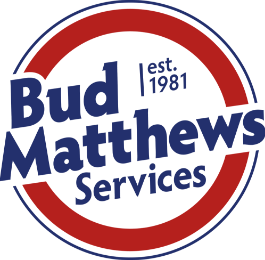When faced with potential issues in your home’s plumbing, you might wonder, “How do plumbers inspect sewer pipes?” This crucial process involves a variety of advanced techniques and tools designed to identify blockages, leaks, and structural damage within your sewer system.
In this article, we will explore the methods plumbers like Bud Matthews Services use to inspect sewer pipes, from traditional approaches to cutting-edge technology like video camera inspections. Understanding these procedures can help you appreciate the thoroughness of professional plumbing inspections and ensure your sewer system remains in optimal condition.
Introduction to Sewer Pipe Inspections
Maintaining the health and longevity of a home’s plumbing system is crucial, and regular sewer pipe inspections play a vital role in this process. These inspections help identify potential problems early on, allowing for timely repairs and preventing more extensive and costly issues down the line.
By understanding the importance of sewer pipe inspections and the common problems that can be detected, homeowners can take proactive steps to ensure the integrity of their home’s drainage system.
Importance of Regular Pipe Inspections
Sewer pipe inspections are essential for a number of reasons. They allow professional plumbers like Bud Matthews Services to assess the condition of the pipes, identifying any cracks, tree root intrusion, blockages, or corrosion that could lead to leaks, backups, and other serious plumbing concerns.
By addressing these issues early on, homeowners can avoid the headaches and financial burden of more extensive repairs down the line. Regular inspections also help to extend the lifespan of a home’s sewer pipes, ensuring the efficient and reliable operation of the entire plumbing system.
Common Sewer Pipe Problems
Sewer pipes can face a variety of challenges that can compromise their performance and lead to costly repairs. Some of the most common sewer pipe issues include cracks, which can allow groundwater to seep in and cause erosion, and tree root intrusion, where the roots of nearby trees and shrubs grow into the pipes, causing blockages and potential leaks.
Additionally, sewer pipe inspections often uncover blockages from debris, grease, or other materials, as well as corrosion that can weaken the structural integrity of the pipes over time. By identifying these problems early through regular inspections, homeowners can take proactive steps to address them and prevent more significant damage to their sewer line.
Plumbers Specialized Techniques
How do plumbers inspect sewer pipes? Plumbers like Bud Matthews Services employ a variety of specialized techniques and tools to thoroughly inspect sewer pipes. These sewer pipe inspection methods range from visual inspections using cameras to more advanced testing procedures, such as hydrostatic pressure testing and smoke testing.
By utilizing these various sewer pipe inspection techniques, plumbers can accurately assess the condition of a home’s sewer pipes and identify any potential problems or areas of concern.
One of the most common sewer pipe inspection methods used by plumbers is the camera inspection. These specialized sewer cameras, often referred to as pipe inspection cameras, are lowered into the pipe system through access points, such as cleanouts or manholes, providing a detailed visual inspection of the pipe’s interior.
Additionally, plumbers like Bud Matthews Services may also check the condition of drain access points, such as floor drains and roof vents, to identify any potential entry points for debris or other issues that could affect the sewer system.
Hydrostatic testing is another technique employed by plumbers to assess the integrity of sewer pipes. This sewer pipe inspection process involves sealing off access points in the pipe system and filling the pipes with water, which is then pressurized. Any leaks or cracks in the pipes will be identified by a drop in pressure, allowing the plumber to pinpoint the location of the issue and determine the necessary repairs.
Smoke testing is another inspection method used by plumbers to identify potential issues within a sewer pipe system. This process involves injecting a non-toxic, odorless smoke into the pipe system, which will then escape through any cracks, breaks, or other openings. By monitoring where the smoke emerges, plumbers can pinpoint the location of any leaks or problems within the sewer pipes, helping to guide the necessary repairs.
Visual Inspection Methods
One of the most common and effective ways for plumbers like Bud Matthews Services to inspect sewer pipes is through the use of specialized camera equipment. These sewer pipe camera inspection tools, often referred to as pipe inspection cameras, are lowered into the pipe system through access points such as cleanouts or manholes, providing a detailed visual inspection of the pipe’s interior.
Camera Inspection
The sewer pipe camera inspection process allows plumbers to closely examine the condition of the pipes, identifying any potential issues such as cracks, blockages, or tree root intrusion. By deploying these specialized cameras, plumbers can pinpoint problem areas and determine the necessary repairs to maintain the integrity of the sewer line.
Drain Access Point Checks
In addition to the sewer pipe camera inspection, plumbers like Bud Matthews Services may also check the condition of drain access points, such as floor drains and roof vents, to identify any potential entry points for debris or other issues that could affect the sewer system. By thoroughly inspecting these access points, plumbers can detect problems before they escalate and cause further damage to the overall drainage network.
The visual sewer pipe inspection techniques employed by plumbers, including sewer pipe camera inspection and drain access point checks, provide a comprehensive assessment of the pipe system’s condition, enabling timely and effective repairs to maintain the proper functioning of a home’s sewer infrastructure.
Hydrostatic Testing
Hydrostatic testing is a powerful technique utilized by experienced plumbers to assess the structural integrity of sewer pipes. This process involves subjecting the pipe system to controlled water pressure, providing valuable insights into potential leaks or cracks that may be present.
Pressure Testing Procedure
The hydrostatic testing procedure begins with the plumber sealing off all access points in the sewer pipe system, ensuring a controlled environment. The pipes are then filled with water, which is gradually pressurized to a predetermined level. If any leaks or cracks exist within the pipes, the drop in water pressure will be detected, allowing the plumber to pinpoint the exact location of the issue.
By employing hydrostatic sewer pipe testing, plumbers can accurately identify areas of concern within the sewer pipe pressure testing methods, guiding the necessary pressure testing sewer pipes to restore the system’s functionality and prevent more extensive damage.
Smoke Testing
Smoke testing is another inspection method used by plumbers to identify potential issues within a sewer pipe system. This process involves injecting a non-toxic, odorless smoke into the pipe system, which will then escape through any cracks, breaks, or other openings. By monitoring where the smoke emerges, plumbers can pinpoint the location of any leaks or problems within the sewer pipes, helping to guide the necessary sewer pipe smoke testing and smoke testing sewer line repairs.
The smoke used in this technique is specially formulated to be harmless and easily detectable, making it an effective tool for detecting sewer pipe leaks with smoke. This method allows plumbers to quickly and accurately identify the source of any issues within the sewer pipe system, enabling them to address the problem efficiently and effectively.
Overall, smoke testing is a valuable tool in the plumber’s arsenal when it comes to thoroughly inspecting and maintaining the health of a home’s sewer pipe system. By leveraging this technique, plumbers can ensure the integrity of the pipes and prevent any costly and disruptive sewer-related problems from occurring.
Dye Testing
Dye testing is a method employed by plumbers to detect leaks and trace the flow of wastewater within a sewer pipe system. This process involves injecting a harmless, fluorescent dye into the pipe system, which can then be detected using a specialized ultraviolet light. By monitoring where the sewer pipe dye testing appears, plumbers can identify the source of any leaks or blockages.
Tracing Leaks with Dye
The dye tracing sewer leaks technique allows plumbers to visualize the path and flow of wastewater within the sewer pipes. As the dye moves through the system, it can be detected at various access points, enabling the plumber to pinpoint the location of any leaks or issues.
Dye Test Limitations
While dye testing sewer pipes is an effective method, it does have some limitations. The dye may not be effective in detecting smaller cracks or issues that are deep within the pipe system, as the dye may not be able to penetrate and reach those problem areas. Additionally, the dye test relies on the plumber’s ability to accurately monitor and interpret the dye’s movement, which can be challenging in complex or hard-to-access pipe systems.
Sensor-Based Inspections
In addition to traditional visual and pressure-based inspection methods, plumbers such as Bud Matthews Services are increasingly leveraging advanced sensor-based technologies to assess the condition of sewer pipes. These sensor-based approaches offer enhanced capabilities for detecting and pinpointing issues within the pipe system, providing valuable insights that can guide targeted repairs and preventative maintenance.
Acoustic Sensors
One innovative sensor-based technique is the use of acoustic sensors, which can detect and locate leaks or blockages by listening to the distinctive sounds they produce within the sewer pipes. These specialized sensors are strategically placed along the pipe system, allowing plumbers to pinpoint the exact location of problems by analyzing the unique acoustic signatures generated by issues such as sensor-based sewer pipe inspection or debris accumulation.
Plumbers Thermal Imaging Cameras for Pipe Inspections
Another sensor-based technology that is proving valuable for sewer pipe inspection is the use of thermal imaging cameras. These advanced cameras can detect subtle temperature differences that may indicate issues within the pipe system, such as thermal imaging for sewer pipe inspection or cracks that could lead to leaks. By identifying these temperature anomalies, plumbers can quickly diagnose and address potential problems before they escalate into larger, more costly issues.
By incorporating acoustic sewer pipe sensors and thermal imaging cameras into their sewer pipe inspection protocols, plumbers can gain a more comprehensive understanding of the overall condition of the pipe system, enabling them to proactively address problems and ensure the long-term integrity of the home’s plumbing infrastructure.
Plumbers Preparing for a Sewer Pipe Inspection
Before professional plumbers like Bud Matthews Services can thoroughly inspect a sewer pipe system, they must first ensure they have proper access to the pipes. This often involves locating and uncovering cleanouts, manholes, or other access points that will allow them to deploy specialized cameras, sensors, or other inspection equipment into the pipe network.
Accessing the Pipe System
Plumbers must carefully identify and expose the various entry points to the sewer pipes, such as cleanouts or manholes, to facilitate the inspection process. This may require excavation work or the removal of obstructions to ensure unimpeded access to the pipe system. By gaining access to these strategic locations, plumbers can effectively introduce their inspection tools and technologies into the pipes, enabling a comprehensive assessment of the system’s condition.
Safety Precautions
Conducting a sewer pipe inspection also requires plumbers to take appropriate safety measures to protect themselves and the surrounding environment. This includes the use of personal protective equipment (PPE), such as hazmat suits, respirators, and eye protection, to safeguard against potentially hazardous materials or gases within the pipe system. Proper ventilation protocols must also be followed to ensure a safe working environment during the inspection process.
Ensure Clear Drains with Our Pipeline Inspection
At Bud Matthews Services, we understand the importance of efficient and healthy pipelines. Our expert team uses advanced video technology to deliver thorough inspections and real-time assessments of your sewer lines. We uncover hidden leaks or damage, providing tailored solutions to keep your plumbing system in top shape.
Contact us for accurate diagnostics and effective results that minimize disruptions. Schedule a pipeline inspection with us today and let our professionals ensure your drains run smoothly.

